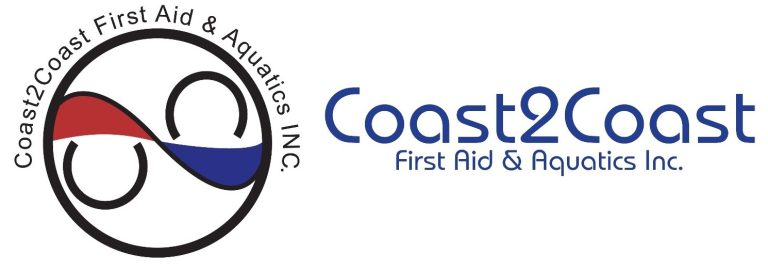Picture this: It’s a hot summer day in Ontario, the sun is beaming, and your little one and all your friends are around the pool or lake, enjoying yourselves in the cool water. Instead of feeling anxious, you’re relaxing, confident in the knowledge that they’re safe and sound, thanks to the life-saving skills they’ve gained through swim lessons.
At Coast2Coast First Aid and Aquatics, we understand the importance of water safety. It’s more than just fun in the sun – it’s about empowering yourself and your child with a lifelong skill that can save your life and theirs.
Drowning: A Silent, Preventable Tragedy
 The Canadian Red Cross reports drowning as a leading cause of preventable death in children and teens, with over 450 people drowning in Canada each year. Canada has thousands of immigrants visiting every year to study, work or explore the serenity. Recent research claims that immigrants in Canada are 4 times more unable to swim and are highly prone to drowning incidents during boating or fishing as compared to people born in Canada. It’s a quiet and fast danger, often happening swiftly and without the dramatic splashing we see in movies. That’s why constant adult supervision is crucial, but swimming skills add a vital layer of protection. Drowning could happen in a swimming pool, lake, ocean or even in a bathroom tub in a house.
The Canadian Red Cross reports drowning as a leading cause of preventable death in children and teens, with over 450 people drowning in Canada each year. Canada has thousands of immigrants visiting every year to study, work or explore the serenity. Recent research claims that immigrants in Canada are 4 times more unable to swim and are highly prone to drowning incidents during boating or fishing as compared to people born in Canada. It’s a quiet and fast danger, often happening swiftly and without the dramatic splashing we see in movies. That’s why constant adult supervision is crucial, but swimming skills add a vital layer of protection. Drowning could happen in a swimming pool, lake, ocean or even in a bathroom tub in a house. Why Swimming Lessons Are an Investment in Your Future

-
Not Just Strokes, But Lifesaving Instincts:
-
Water Confidence
-
The Healthy Side of Splashing Around
It’s Never Too Early (Or Too Late!)
The ideal age to start swimming lessons depends on your child’s individual development. Some children are ready for parent-and-child classes as early as 6 months, while others may not be ready until they are 4 or 5 years old.
But remember
It’s never too late to learn! We also offer adult mobile swimming lessons because everyone deserves to feel safe and confident in the water.
Register for Mobile Swimming Program
At Coast2Coast, we have a service called “Mobile Swimming” which means we have qualified, experienced & well trained instructors who will provide you with the class you want at a pool of your choice.
Choosing the Right Swim Program
 Choosing the right swim program is essential for anyone looking to develop their aquatic skills or overcome water-related anxieties, regardless of age or experience level. Coast2Coast offers a comprehensive range of swim programs designed to cater to diverse needs and preferences. Whether you’re seeking private lessons in the comfort of your own home or a group setting at one of their facilities, Coast2Coast has a solution for you:
Choosing the right swim program is essential for anyone looking to develop their aquatic skills or overcome water-related anxieties, regardless of age or experience level. Coast2Coast offers a comprehensive range of swim programs designed to cater to diverse needs and preferences. Whether you’re seeking private lessons in the comfort of your own home or a group setting at one of their facilities, Coast2Coast has a solution for you: - Mobile Swimming Lessons: Ideal for individuals who prefer the convenience and privacy of learning at home or those with limited mobility, Coast2Coast brings certified instructors and a customized curriculum to your doorstep anywhere in the Greater Toronto Area!
- Integrated Swimming Program (ISP): This innovative program provides swimming lessons in multiple languages, ensuring accessibility and inclusivity for individuals with diverse linguistic backgrounds.
Your Role: Beyond the Swim School
 Swimming lessons are crucial, but your role as a parent is equally vital.
Swimming lessons are crucial, but your role as a parent is equally vital. -
Be Vigilant:
Never leave children unsupervised around water, even if they’re strong swimmers.
-
Set Boundaries:
Teach your child to always ask permission before entering any body of water.
-
Learn CPR:
Knowing cardiopulmonary resuscitation can be the difference in a water emergency. Coast2Coast offers a variety of First Aid and CPR courses that could help people to learn basic to advanced First Aid and CPR skills. Register today and become a hero for your loved ones and everyone around you!
How to Rescue a Person Who is Drowning

- Always remember that the only person who should enter the water to save a drowning person should be a lifeguard or a professional first responder.
- Throw a steady object for the drowning person to hold onto, rather than going into the water yourself unless it is safe to do so.
- Keep your body lean and low while pulling the person with the help of the object; extend it and pull towards yourself very slowly.
- If the object can’t reach the drowning person, it’s recommended to use a flotation device such as tubes, life jackets, balls to throw at the person.
- After the person is out of the risk of drowning, it’s essential to immediately check the ABCs (Airway, Breathing and Circulation)
Start CPR if Necessary
If the person is not breathing and is unresponsive, begin CPR immediately. For a drowning victim, it’s recommended to start with 5 rescue breaths before moving on to chest compressions.-
Rescue Breaths:
Tilt the person’s head back and lift their chin to open the airway. Pinch their nose shut, seal your mouth over theirs, and give 5 breaths, each lasting about 1 second. Watch for their chest to rise and fall. -
Chest Compressions:
If the person remains unresponsive, begin chest compressions. Kneel beside them, place the heel of one hand in the center of their chest, and place your other hand on top, interlacing your fingers. Keep your arms straight and press down hard and fast, compressing the chest about 2 inches deep at a rate of 100-120 compressions per minute. -
Continue CPR:
Continue cycles of 30 chest compressions and 2 rescue breaths until the person shows signs of life or emergency medical services (EMS) arrive.
Additional Considerations:
- If you are alone, perform CPR for 1 minute before calling for emergency help.
- If someone else is present, have them call for help while you begin CPR.
- If the person vomits, turn them on their side to clear the airway and then resume CPR.
Make a Splash with Confidence: Enroll Today!
At Coast2Coast, we believe that swimming is a life skill, not a luxury. It’s about empowering your child with confidence, fitness, and safety skills that will last a lifetime. Don’t just dip your toes in; dive into a future filled with safe, fun-filled water adventures!
However, the information provided in the blog is for educational purposes only and should not be considered a substitute for professional advice. Coast2Coast doesn’t assume any responsibility or liability for any actions taken based on the information provided in the blog. It is important to consult with a certified swimming instructor or lifeguards.
Register for First Aid Training
Register today for a First Aid Training course and learn how to deal with emergencies and keep your loved ones safe! Check out our facilities and book your spot now.


















